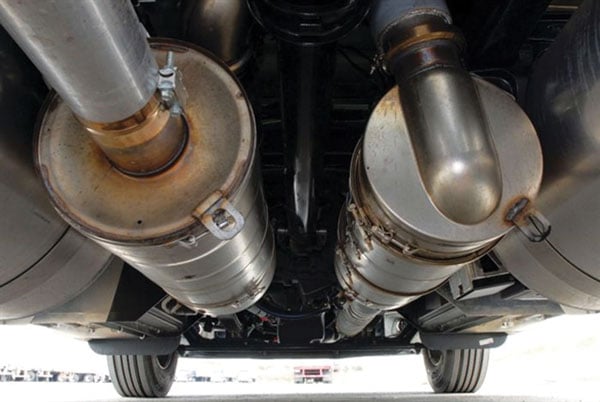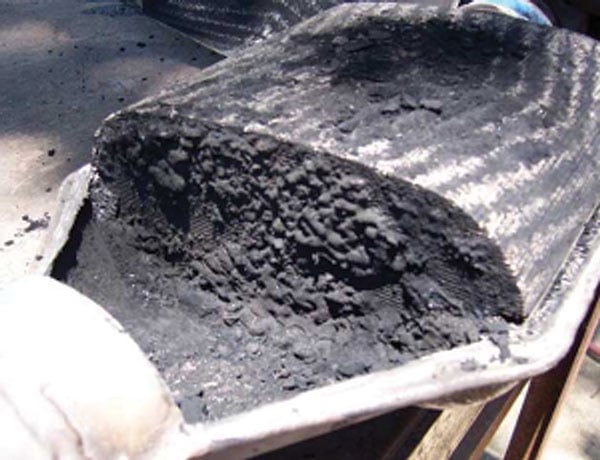Prevent the headache of DPFs, regenerations, parts replacements and repairs, and costly downtime by implementing the right additive to alleviate many of your EGR, DPF and SCR problems.
By Alec Taylor
Keeping the air clear of pollutants and poisonous gases that are expelled from diesel vehicles has always been a concern and one that the EPA decided to tackle in earnest in 2007. When it comes to limiting both the amount of noxious fumes (NOX etc.) and diesel particulate matter (DPM), better known as soot, difficulties arise as they are formed under opposite conditions. DPMs can be limited with a hotter, more thorough combustion while the more noxious gases like NOX are lessened only by lowering the emission temperatures which creates a dilemma when trying to limit them both. Hence the formulation of today’s emissions systems.
To reduce both forms of pollutants, the EPA created a complicated exhaust system comprising of three main components: Exhaust Gas Recirculation (EGR) Valves, Diesel Particulate Filters (DPF) and Selective Catalytic Reduction (SCR). These complicated systems mixed with the need for efficient and reliable vehicles in the waste industry, comes an increase in maintenance and repair expenses to say nothing for costly downtime.
EGR Valves
The purpose of Exhaust Gas Recirculation Valves, or EGR Valves, is to reduce emissions by recirculating the exhaust through the engine rather than expelling it directly through the exhaust system. This recirculation creates a cooler running engine, limiting NOX, but also results in a less efficient combustion cycle by reducing fuel economy and increasing unburned fuel, or diesel particulate matter (DPM). The more DPMs that are re-circulating through the exhaust, the more soot cakes onto the intake and combustion chamber. Not only that, but this soot residue can also get into the oil where it can be corrosive and wear down the bearings which could potentially cause complete engine failure. It is at this point that the Diesel Particulate Filter (DPF) comes into play.

costly downtime by implementing the right additive.
DPFs
When the exhaust is finally expelled from the engine, it is sent into the DPF. DPFs catch the soot and limit the amount that can be expelled into the atmosphere. Over time, the DPF plugs with soot and causes back pressure to the engine which lowers its efficiency. This triggers the “regeneration mode,” also known as a regen. When an engine goes into a regen, it increases the engine rpms which raises the temperature of the DPF to about 1,100°F. Simply put, the engine uses an increased amount of fuel to raise the temperature and burn the DPMs out of the filter. However, if the operator fails to heed the warnings and the regeneration process is not completed, it can result in the DPF plugging completely and eventually causing the engine to completely shut down. If this happens, the operator either has to take the filter off to get it cleaned, known as a bake-out, or completely replace the DPF which can be upwards of $7,000 for a replacement.
SCRs
Finally, the third step of today’s emissions systems, the Selective Catalytic Reduction (SCR) is designed to eliminate the noxious “greenhouse” gases like NOX and also helps in that the engine does not need to rely on the EGRs as much. The SCR works with Diesel Exhaust Fluid (DEF) whose main ingredient, urea (which turns into ammonia when misted into the SCR), combines with the noxious fumes to create harmless water and nitrogen rather than poisonous gases. However, if the DEF is low, the vehicle can go into “limp mode,” causing the vehicle to only drive as fast as 5 mph. Lastly, when out of DEF most systems will not allow the engine to turn back on once it has been turned off.
Preventing Unscheduled Downtime
While these systems bring with them many problems, there are solutions to prevent expensive repairs, replacement of parts, and unscheduled downtime. Some recommend the use of high quality low-ash motor oil, regular highway driving to “blow out” the carbon buildup that many slower moving vehicles are prone to, or (illegally) deleting the DPF system altogether. One of the easiest and effective of them all is finding an additive that enhances combustion, allowing for less build-up of soot as well as less wear and tear on the entire fuel system.

When looking for an additive that will result in less wear and tear on the system, try to find one that creates a more complete combustion cycle by lowering the temperature of the initial combustion and burning the fuel more thoroughly, leaving less unburnt hydrocarbons while doing so at a slightly lower temperature. The lower the temperature of the combustion cycle, the less noxious fumes can be produced. In fact, particular additives have been shown to eliminate NOX by as much as 8 percent. Similarly, the less unburnt hydrocarbons result in less DPMs needing to be caught in the filter, and less regenerations.
The Right Additive
Many users have attested to the fact that the correct additive can lower your regenerations by as much as 60 percent or more. With this more efficient combustion cycle, less DEF is used, there is an increase of fuel economy of about 5 to 8 percent or more, and an increase in power and engine responsiveness. The right additive will also lubricate your upper cylinder heads and injectors, replacing the lubricity agents missing in today’s Ultra Low Sulfur Diesel (ULSD), while also breaking up any carbon deposits or build-up on the EGR valves. In fact, there are many video testimonials of people in all types of industries experiencing a massive reduction in regens and other emissions problems here. Prevent the headache of DPFs, regenerations, parts replacements and repairs, and costly downtime by implementing the right additive to alleviate many of your EGR, DPF and SCR problems. | WA
Alec Taylor has been the Director of Operations of Fuel Ox (Asbury, NJ) since 2014. He oversees production, sales, and the overall direction and organization of the company. Alec works side-by-side with his partner and father, Rand Taylor. Both are constantly searching for more ways to alleviate fuel related issues for their current and future customers. He can be reached at (844) 8-FUELOX or e-mail [email protected]
